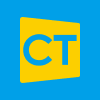Web3 payment technology and its application in Charity

蔡政德
蔡先生是香港國金獅子會的創會會員,並於2021-22年度擔任香港國金獅子會會長,除獅子會以外,他擔任澳洲管理會計師香港分會一帶一路委員會副主席、金融科技師協會 財富科技委員会召集人、環境社會及企業管治基準學會委員。
More BlogsWeb3 payment technology has the potential to revolutionize charitable giving by providing a more transparent, efficient, and secure way to make donations. Web3 leverages block chain technology to enable direct peer-to-peer transactions without the need for intermediaries.
When applied to charitable donations, web3 payment systems offer several advantages. They enhance transparency by providing a public, immutable record of all transactions. This transparency helps build trust between donors and charities, as donors can verify how their funds are being utilized. Besides, smart contracts can be utilized to ensure that funds are allocated according to predefined rules, providing further transparency and accountability. Web3 payment systems can incorporate programmable money features, allowing for innovative functionalities in charitable giving. For example, conditional donations can be made wherein funds are released only when specific conditions or milestones are met. This feature ensures that the funds are utilized as intended and encourages transparency and accountability.
Block chain technology, with its decentralized and cryptographic nature, provides robust security measures. Donors’ personal information and financial data can be securely stored and encrypted, reducing the risk of fraud or data breaches. This security aspect instills confidence in donors and encourages them to contribute to charitable causes.
Although web3 payment technology holds significant potential, there are challenges to address, such as scalability, user adoption, regulatory frameworks, and ensuring protection against fraud and misuse. However, as the technology continues to mature and overcome these challenges, it is expected to play an increasingly significant role in transforming the landscape of charitable giving.
Having said that, Web3 payments in fact offer increased efficiency by eliminating intermediaries and reducing transaction costs. Traditional payment methods often involve multiple parties, such as banks or payment processors, which can incur fees and delays. Web3 payments remove these middlemen, enabling faster and more cost-effective transactions. This means that a higher percentage of donated funds can directly benefit the charitable cause.
However, web3 payment systems do have certain challenges such as scalability, user experience, and regulatory frameworks need to be addressed for seamless integration into the charitable sector.
Below are some use cases for web3 payment technology and its application in Charity.
- Decentralized Fundraising Platforms: Web3 payment technology enables the development of decentralized fundraising platforms powered by block chain. These platforms provide an alternative to traditional crowdfunding platforms by leveraging smart contracts to automate the collection and distribution of funds. They allow charities and individuals to create campaigns, receive donations directly, and track the utilization of funds in a transparent manner.
- Tokenized Donations: Web3 payment systems can incorporate the use of tokens, which represent digital assets on the block chain. Charities can create their own tokens and offer them as incentives or rewards to donors. These tokens can have utility within the charity’s ecosystem, such as granting access to exclusive content, events, or services. Tokenized donations can enhance donor engagement and loyalty while promoting the growth of the charitable community.
- Global Accessibility: Web3 payments have the potential to address the challenges of cross-border donations. Traditional methods often involve high transfer fees, currency conversion costs, and slow transaction times. Web3 payment systems, powered by cryptocurrencies or stable coins, can facilitate instant and low-cost transactions across borders, making charitable giving more accessible to individuals worldwide.
- Traceability and Impact Measurement: The transparent nature of block chain technology allows for enhanced traceability and impact measurement in charitable giving. Donors can track the journey of their donations, from the initial transaction to the ultimate utilization by the charity. This level of transparency enables donors to see the real-world impact of their contributions, fostering trust and accountability.
- Decentralized Governance: Web3 payments can facilitate decentralized governance models within the charitable sector. Block chain-based voting mechanisms and governance protocols enable stakeholders, including donors, to participate in decision-making processes. This allows for more inclusive and democratic management of charitable organizations, ensuring that the interests of the community are represented.
- Micropayments and Fractional Donations: Web3 payments offer the potential for micropayments and fractional donations. With the low transaction costs associated with block chain-based payments, donors can contribute small amounts more frequently. This opens up opportunities for individuals who may not be able to make large one-time donations but still want to support causes they care about.
In summary, as the technology continues to evolve, web3 payment systems holds promise for empowering donors and charities alike, fostering greater trust, and maximizing the impact of charitable donations.
以上內容及資料僅屬個別作者的個人意見,並不代表www.CTgoodjobs.hk的立場。CTgoodjobs對因以上人士張貼之資訊內容所帶來之損失或損害概不負責。




 Follow CTgoodjobs for the latest career news, hot topics and recommended jobs!
Follow CTgoodjobs for the latest career news, hot topics and recommended jobs!